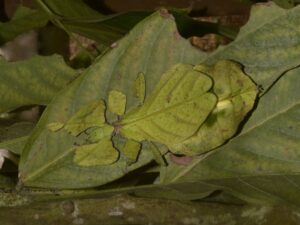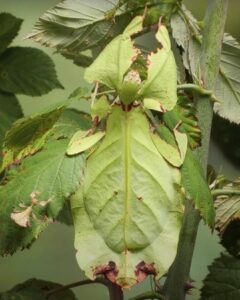Giant Malaysian Leaf Insect (Pulchriphyllium giganteum)
Updated on
18/11/2022The giant Malaysian leaf insect is a leaf insect living in the rainforests of Malaysia. They are mostly female, but the first male specimen was discovered in 1994, proving their existence.
Scientific Classification
- Class:Insecta
- Order:Phasmatodea
- Family:Phylliidae
- Genus:Pulchriphyllium
- Species:P. giganteum
Conservation Status
Description
It is the largest leaf insect in the world; males are 3.6 inches long, while females are larger at 4.8 inches. They are bright green, similar to the leaves they reside on. They lack hindwings meaning they are unable to fly.
Distribution: Malaysia, in the Taman Negara rainforest
Habitat: Trees with leaves similar to the insects’ bodies
Do they bite: No
Lifespan: Males: A few weeks; Females: Around a year
Predator: Birds
Behavior and Characteristics
Feeding
Their diet consists of bramble and oak leaves.
Defensive
When approached by a predator, they will remain still and pretend to be a leaf. As it is naturally docile and passive, the effectiveness of the camouflage increases.
Life Cycle
Little remains known about the breeding of these leaf insects. Females undergo parthenogenesis, laying unfertilized eggs that grow up to be female. However, they can also mate with males and give birth to fertilized eggs that grow to be male.
The eggs are buried underground.
1. Egg Stage
Eggs are brown or black, resembling seeds. They hatch after six months.
2. Nymph Stage
Initially, they are brown or red but become green after feeding on leaves. It takes seven months for the nymphs to mature and eight to become capable of reproducing.
Pet Care Sheet
These insects make fascinating pets, but can be a challenge to keep alive due to their fragile nature between molts. Also, never keep other insects with them as they can get consumed by accident or if food is scarce.
Enclosure: 16 inches high, 12 inches deep, and 12 inches wide
Temperature: Between 25 °C and 30 °C
Humidity: Make sure there is sufficient ventilation
Feeding: Same as wild specimens
Source
jungledragon.com, naturerules1.fandom.com






